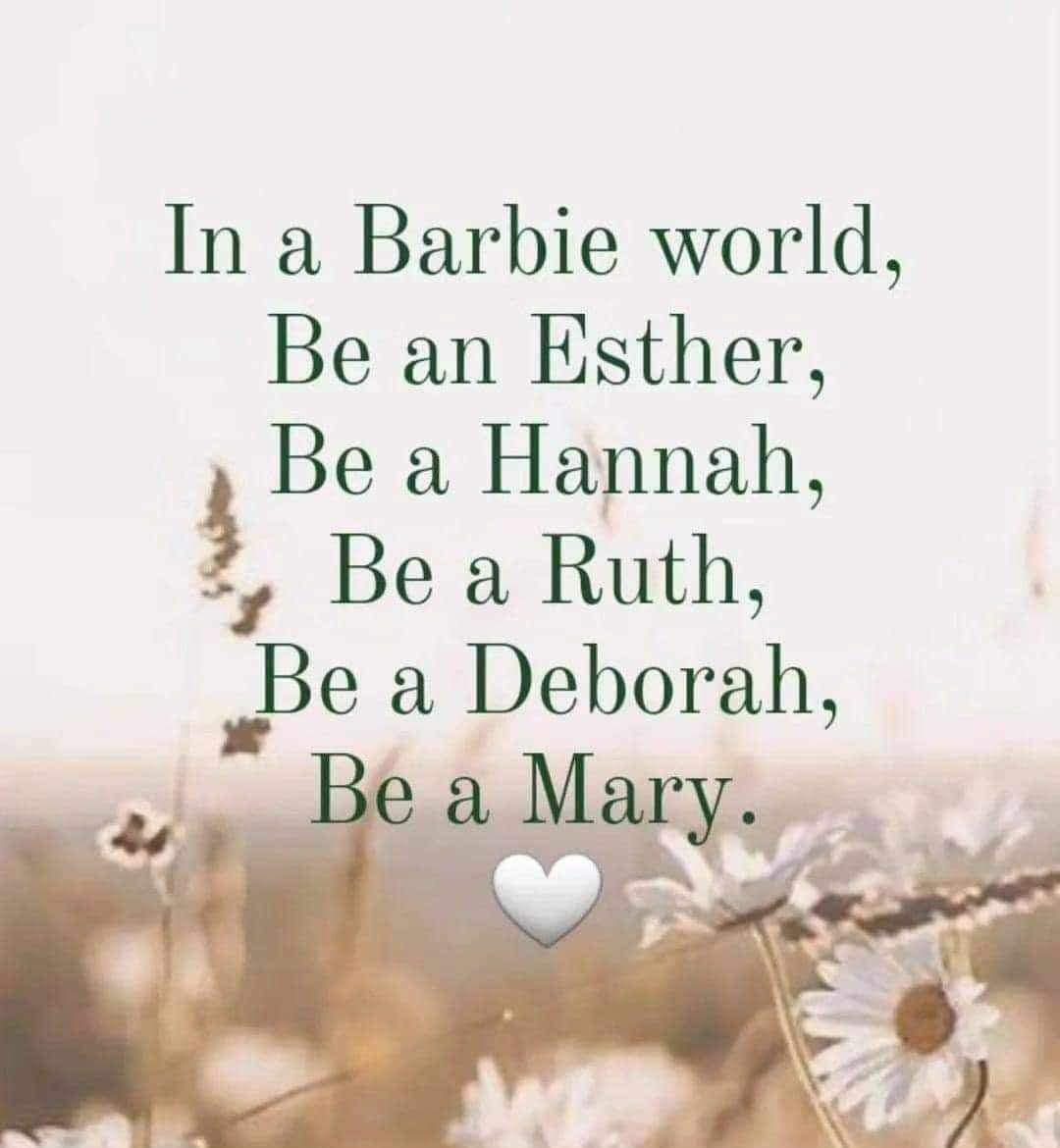Sorry for the delay! We’ve had some technical difficulties this week.
PSA: This one is mostly for the ladies, but dads of girls (and grandpas, uncles, god-dads), you should read on too!
Barbie-mania has taken over the Summer; frankly, I’m kind of over it. Don’t get me wrong, I had a HUGE Barbie collection and played for hours with these dolls as a kid in the 90s. Barbie taught many young girls to dream big and break that proverbial glass ceiling. I’m all for first-wave feminism. Women’s suffrage and legal gender equality are fantastic. Second, third, and fourth (and apparently there is a fifth coming soon to a city near you) waves of “feminism” aren’t my style, but more on that another time. Unfortunately, Barbie has become a symbol of materialism and these post-Christian waves of feminism. Mattel’s emphasis on Barbie’s possessions and many careers is quite the opposite of a Christian worldview. So, in this Barbie world, what are we to do?
This image began floating around on my newsfeed earlier this Summer and I keep coming back to it in prayer, so I thought it was time to take a deeper dive into the lives of these true role models.
Queen Esther’s story takes place around 480 BC in the Persian Empire under the reign of Ahasuerus, better known as Xerxes I. Haman, the king’s highest official wants to kill all of the Jews because a man named Mordecai refuses to bow to him. Esther intercedes even though she knows it could cost her life. In the end, the Jews are spared and their enemies are defeated. Esther is a brave and loyal leader, willing to sacrifice even her life for God and His people.
Hannah is the mother of the great high priest Samuel, but her story begins many years before her pregnancy. Hannah was married to Elkanah. For many years she was unable to conceive so her husband took a second wife with whom he had many children. Hannah prayed and wept asking God to give her a son and promising that she would dedicate his life to God’s work. Eventually, she did conceive and named him Samuel which means “God has heard”. Hannah teaches us to pray with deep, steadfast faith and understanding that God will provide.
After Ruth’s husband and father-in-law died tragically, she could have returned to her family in Moab as their culture would have advised. Faithful Ruth chose instead to stay with her mother-in-law Naomi and accompany her back to Bethlehem. Ruth knew that Naomi was too old to easily remarry and it would be difficult for Naomi to survive if she were to abandon her. Ruth later married Boaz who provided for both her and Naomi. Boaz and Ruth became the great-grandparents of King David. Ruth shows how to love sacrificially and trust with all your heart.
Deborah was a prophetess and judge, a rare combination in the Bible. She instructed a man named Barak to march on the Canaanites, specifically their commander Sisera. Barak would not go unless she accompanied him, which she did saying, “I will certainly go with you but you will not gain glory for the expedition on which you are setting out, for it is into a woman’s power that the Lord is going to sell Sisera.” Judges 4:9. Deborah was wise and courageous.
Lastly, our Mother Mary. Throughout history, Mary has been a shining example and a guide for all Christians. Her fiat, or “let it be done”, brought about the incarnation, changing the course of human history. Her surrender should inspire us. Her belief and love for her creator are unmatched. Mary continues to guide humanity as she intercedes with love on our behalf as Queen of Heaven and Earth.
When all of the pink around you becomes a little too overwhelming and you need a reminder of what real Christian femininity looks like, turn to your Bible. These are only a few examples of what it means to truly be a woman; brave, faithful, loyal, wise, and loving.
~Talitha cumi~




